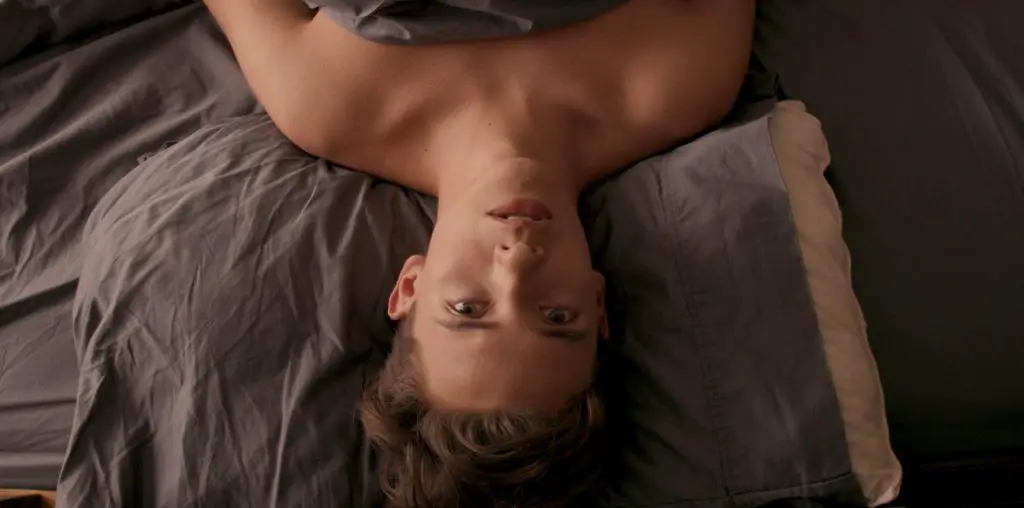
Before I saw “Shopgirl”, I imagined a modern-day sequel to “L.A. Story” where we see if Harris K. Telemacher has changed. L.A. changes all the time so why wouldn’t Harris?
Because of “Shopgirl”, it’s no longer a necessary idea. This is how Steve Martin sees L.A. now, the third part of what could conceivably be known as his L.A. trilogy.
“L.A. Story” was the first, where it was surprising that it even had a director. By the nature of his screenplay and his performance as well as the others he co-starred with, Martin looked like the maestro. It could be imagined that English director Mick Jackson was merely a highly-skilled technician standing small on a far corner of the sets and locations, quietly moving this and that so the comedy could flow. “Bowfinger” was the second, with Bobby Bowfinger (Martin) trying to make the movie he always wanted to make. Another script by Martin, directed this time by Frank Oz. Los Angeles again, with his comments on the film industry.
Now it’s “Shopgirl” and the director this time is Anand Tucker, also English and greatly known for “Hilary & Jackie” and then waiting five years to make another movie because as he claims in the featurette, “Evolution of a Novella: The Making of Shopgirl” he was waiting for a script that he’d really want to direct, not just to take a script for the sake of having something else to show.
In “L.A. Story”, Jackson made L.A. even bigger, constantly in awe of what he saw there. Tucker does the same in a slow and appreciative and evocative opening sequence where a helicopter-mounted camera cruises over buildings and freeways, eventually leading to Saks 5th Avenue where life begins for “Shopgirl.” Tucker is just as much in awe of L.A. as Jackson was, though here, it’s not a stylized L.A. It’s L.A. as it is today, brooding, at times thoughtful, frustrating, and populated by souls like and completely unlike Mirabelle Buttersfield (Claire Danes).
She works at Saks 5th Avenue in the glove department, living a silent life. There’s not much to it besides the job, her cat at home and her charcoal sketches, which may be the reason she moved to L.A. like any other artist. Bigger city, bigger opportunities, depending on where you can get ‘em. Or, at home later in Vermont, Mirabelle looks at her mother, sitting still at the breakfast table, and wonders who she wants to become. Her mother or herself? Vermont may have been too silent.
Two possibilities for a brighter, clearer life present themselves. Jeremy (Jason Schwartzman), who meets her at a Laundromat and is unusually straightforward about a lot of things, is one, and Ray Porter (Steve Martin), made rich from the Seattle computer industry, is the other. For the bulk of the movie, Mirabelle goes for Ray, 50-something and divorced, who seems wistful about life, wanting only a no-strings-attached sexual relationship, but clearly he could use more, if only he wanted more. She reads his actions toward her as budding love, respect, and she wants that. But as it comes to pass later, Ray, always on a business flight to somewhere, is always above life, always looking down at what exists on the ground. Jeremy, who specializes in stencilings for an amplifier company, is on the same sidewalks, the same roads, the same places as Mirabelle. He’s rooting through life also, trying to find what he could belong to. Schwartzman is strange and wonderful, always unique and there’s no doubt in him never letting go of that part of himself.
Danes also has a look about her that I’ve always liked. Project on to her whatever you’d like, whatever you believe she is in any of her dramatic roles, and it’s never invalid. There’s always many possibilities within her. Mirabelle’s wordless struggle to find a different kind of life gives Danes’ expressions much strength. It’s hard and it usually remains so. Emotions are never simple. Jeremy is the opposite of all this because while Mirabelle tries to extract something from Ray that shows her he loves him, he’s on the road with a band, living out a different life, improving himself. It’s different for everybody.
The aforementioned featurette is serviceable in comments from Martin that display his proudness over the film, and from Tucker, who is genuinely tickled by all that he and everyone else has done. Danes is also just as honest. Two deleted scenes give a tutorial in what tone and pacing is, how one scene can completely change a character, and a feature-length audio commentary by Tucker is there too.
At this point in his career, Martin should consider more of these movies and if there’s not enough time all the time for them, then there should at least be comedy which returns him full force to his former ways. It’s hard to believe that “The Pink Panther” can exist in the same universe where he hides his humor in his words, letting audiences discover where the laughs are. For now we’re safe. Nothing new scheduled yet on the acting side. Hopefully he’ll decide to laugh as he did all those years ago and still does. We could use more of that wild and crazy guy.
